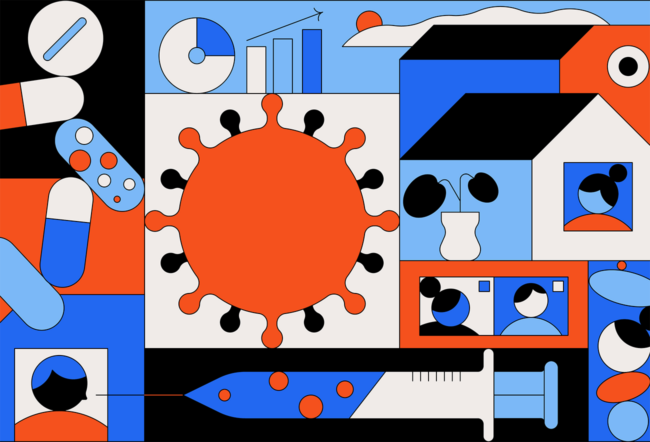 Remember the first color printers? Take your project to Kinko’s and then watch some well-trained techie struggle with the machine for a quite a while before your job was done.
Remember the first color printers? Take your project to Kinko’s and then watch some well-trained techie struggle with the machine for a quite a while before your job was done.
Today, 3D printers are about at the same place that color printers were 15 years ago, says Wharton practice professor David Robertson. Yet, you can’t really say 3D printing is an up and coming technology because “it’s already here.”
Want to print out dental caps for deteriorating teeth right in the dentist’s office – thereby removing the need for a temporary cap or a return visit? It’s being done routinely right now in many offices. This technology is ideal for producing tailor-made products because it destroys some traditional manufacturing economics, which dictate that the first unit one makes of anything carries high overhead costs and high risk when it comes to its chances for success. With 3D printing, the costs of producing the first unit are low. That destroys traditional manufacturing barriers, Robertson says.
This disruptive technology could change manufacturing – and retailing – the way Amazon shocked the book business and Apple’s iTunes changed the music world, Robertson says.
Already, some companies – like LEGO – could be vulnerable. For one-tenth of the cost of a LEGO version of Frank Lloyd Wright’s famous Fallingwater masterpiece, Robertson’s son has built a similar structure using the video game Minecraft (which uses a digital form of building blocks). He then linked to a program that turns the Minecraft struture into a 3D model and sends it off to a company that does 3D printing as a service. What’s more, Robertson points out, one could change or customize the Wright design in any way. “You could decide to add Frank Lloyd Wright’s guest house to the project, if you wanted.”
But that’s just fun and games compared with potentially much bigger disruptions. It’s not hard to imagine 3D printing overtaking manufacturing in China one day – for certain products, Robertson, says. By eliminating shipping and other overhead, and automating much of the labor, costs can melt away fast.
“3D printing technology coupled with a reduction in energy prices could absolutely lead to an upswing in U.S. manufacturing,” Robertson says. “Wherever there’s disruption, there’s often a change in the dominant firms in an industry. Whether the new leaders are going to be in the U.S., Germany, Japan or China remains to be seen. But the manufacturing skills, design techniques, capital investments and marketing practices will all be different.”
Not only can many products be made cheaply using 3D printing, but like Fallingwater, they can be endlessly customized. Want a salt shaker in the shape of your head, with your face on it? Robertson’s teenage son (and his friends) already have them. Want to swap out the black frames on your glasses for a blue pair today to match your top? That shouldn’t take long.
You can also print out coffee lids shaped like your girlfriend’s lips.“Kind of sweet. Kind of creepy” writes Robertson on his blog. You can print out a gun (creepy and scary), a bicycle (a work in progress, but it works), choclolate and specialized cell phone covers.
And while 3D printing has been around for a while, what’s different today is that it is getting cheaper. Some effective units now sell for just $2,200. “They keep getting better and cheaper,” says Robertson. “3D printing is absolutely going to be disruptive. The rate of change is dramatic — there have been three major announcements in as many months of new printers, each with major improvements in capability at very low price points. So it’s becoming cheaper and faster to produce custom parts in small volumes.” The era of desktop manufacturing has arrived.
And the design apps are getting better too. That will change what consumers demand, according to the so-called Long Tail theory. As this Knowledge at Wharton article noted, that theory “suggests the Internet drives demand away from hit products with mass appeal, and directs that demand to more obscure niche offerings.” Sales of once-obscure books did better on Amazon than in the old bricks and mortar days. “The Long Tail theory suggests that, as the Internet makes distribution easier — and uses state-of-the-art recommendation systems that allow consumers to become aware of more obscure products — demand will shift from the most popular products at the ‘head’ of a demand curve — as charted on an xy axis — to the aggregate power of a long ‘tail’ made up of demand for many different niche products.”
Interestingly, the Long Tail theory was developed in 2004 by Chris Anderson, editor-in-chief of Wired magazine, who has a new article out on 3D printing – “The New MakerBot Replicator Might Just Change Your World.”
Notes Robertson: “The Wired story was great, but only half the story. The other half is the revolution in design technologies. The ability to create, scan and/or transform a 3D model is also changing dramatically. It is now easy to use a laser pointer, a Kinect (game) or a simple digital camera to capture the shape of a 3D model and send it out for printing. But you can also send it to someone who can make you custom orthotics, a better fitting bra or a bobblehead doll that looks just like you.”
In two to five years, says Robertson, expect to see a “democratization of retailing.” Consumers will be able to make their own jewely, toy or bicycle accessory design, put it up on a web site and make it available for consumers to easily print out themselves or through a service bureau. “What is the value of Walmart or Target if I’m able to get more interesting designs from people on the web. At that point, there is no benefit to mass production anymore. One area that is ripe for transformation: the aftermarket for automobile and motorcycle products.
It’s a big jump, and not everyone agrees it’s coming. Eric K. Clemons, a Wharton professor of operations and information management, says that “3D printers are mostly for making one-off copies fast of single-material objects from computer representations. Not exactly a cheap way to make multiple copies, or a cheap way to make objects from multiple materials. For now I do not think these are really relevant to much of manufacturing. It’s sort of like, ‘Did computer printers replace color magazines’? Not exactly.”



